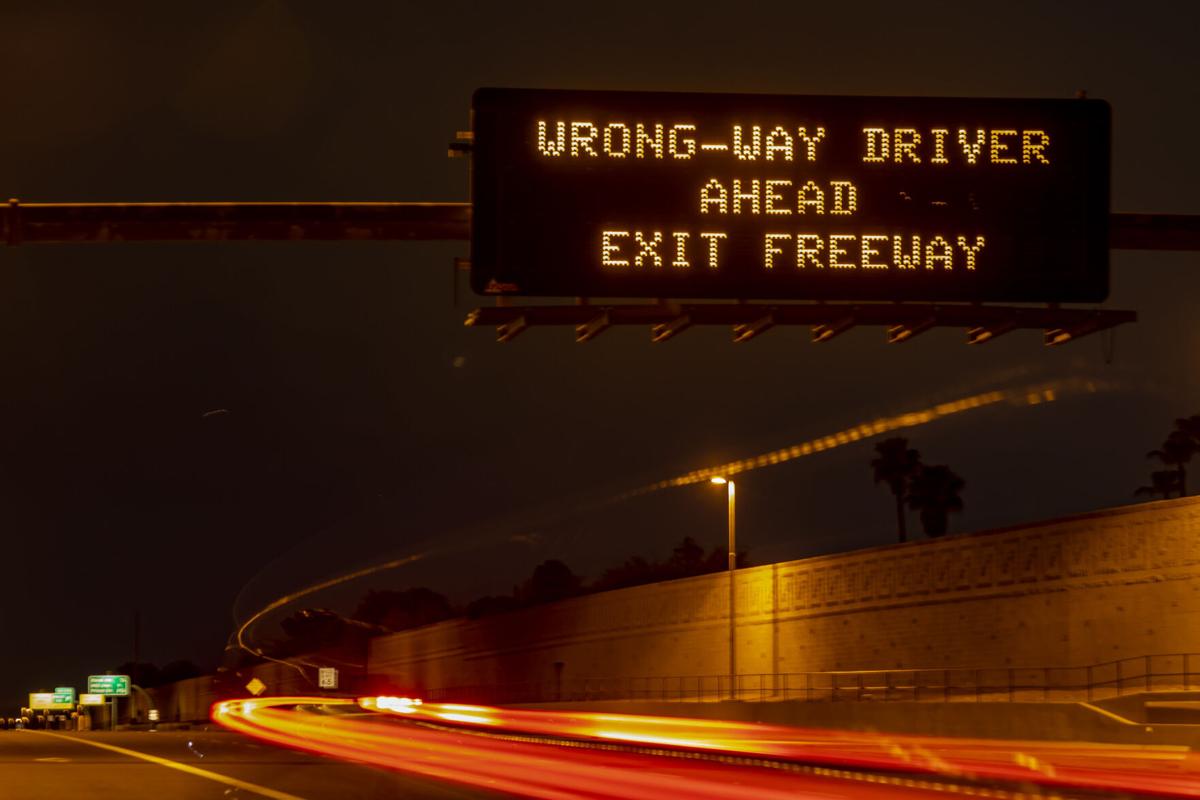The American Automobile Association is calling for drivers to be better prepared when traveling to prevent fatal wrong-way crashes on Arizona highways.
The agency found that the fatal wrong-way crash rate in Arizona rose by 66% from 2015-2018 when comparing the total wrong-way crash fatalities between 2010 to 2014. That amounted to 15 fatalities on average per year between 2015 and 2018, compared with nine deaths on average a year from 2010-2014.
Nationwide, 1,877 people (about 375 a year) lost their lives in these specific crashes from 2010-2014, and the number rose to 2,008 (about 500 a year) during 2015-2018, the report said.
They’re researchers examined the number of fatal wrong-way crashes and the number of fatalities using data from National Highway Traffic Safety Administration’s Fatality Analysis Reporting System.
“Fatalities from wrong-way crashes are heading in a dangerous direction,” said Aldo Vazquez, a AAA spokesman. “AAA and the NTSB urge state transportation agencies to adopt driver-based countermeasures to combat this deadly trend.”
The researches also examined the characteristics of wrong-way drivers when compared to other drivers, analyzing eight factors it says “increased a motorist’s odds of being a wrong-way driver.”
“Researchers found that the odds of being a wrong-way driver increased with alcohol-impairment, older age, and driving without a passenger,” the foundation said.
The most significant factor it found was alcohol impairment, which was found in six of 10 fatal wrong-way crashes, the report said.
More crashes also occurred with drivers over 70 although most drivers in this age range spend less time on the road and fewer miles driven in each trip compared with younger motorists.
The foundation is reminding drivers to always plan for a designated driver if consuming alcohol or other substances that can potentially cause impairment.
They also call for motorists to stay alert and stop driving as “fatigue impacts reaction time and judgment, causing people who are very tired to behave in similar ways to those who are drunk,” the foundation said.
Some of the foundation’s and the National Transportation Safety Board’s recommendations to prevent this crashes is to add countermeasures such as: alcohol-ignition interlock devices; high-visibility enforcement; installing visible traffic signs and signals that follow national standards; and changing state laws to help identify medically at-risk drivers.
To stop these fatal crashes along Arizona’s highways, the department of transportation has established the first-in-the nation, $4.2 million Wrong-Vehicle Detection System in January 2018.
The system tracks vehicles in real time along 15 miles of Interstate 17 between Interstate 10 and State Loop 101 in Phoenix. It uses thermal cameras to detect wrong-way vehicles in exit ramps and other points of entry along the road.
ADOT has found through an 11-year analysis that in Arizona, 25% of all wrong‐way crashes were fatal, compared to 1% percent of crashes overall that occurred on divided highways.
The results of ADOT’s two-year pilot program yielded an “overwhelming percentage of wrong-way drivers made self-correcting turns on freeway exit ramps and did not enter the I-17 mainline lanes,” the report said.
Department officials added that dispatching law enforcement was the “most significant” benefit of the wrong-way detection pilot program.
“In 2018, the detection system resulted in more than a threefold increase in wrong-way vehicle detections in the pilot area compared with traditional means (911 calls) alone,” according to the report.
When detected, ADOT dispatchers as well as state troopers track the vehicles.
The system automatically triggers notification to law enforcement and initiates signs to alert traffic there’s a wrong-way vehicle on the road.
It also alerts the drivers of wrong-way vehicles with use of warning signs fixed with flashing, red LED lights around them.
The department’s plan is to apply these countermeasures on urban freeways and rural highways throughout Arizona.
In 2019, the department received the National Roadway Safety Award from the Federal Highway Administration and Roadway Safety Foundation.
“Our awards honor those who successfully identified dangerous issues in their systems, as the ADOT team did, and applied the latest research and technology to implement effective and cost-efficient fixes,” said Greg Cohen, executive director of the foundation. “We urge departments across the nation to look at these innovative solutions and replicate them wherever possible.”
Down the Road
Downtown Links road updates: Crews will reopen Sixth Street from North Stone Avenue to North Sixth Avenue on Friday, April 30 as part of the project to link Barraza-Aviation Parkway to Interstate 10.
The intersection at Stone and Toole avenues will close Monday, May 3, at 6 a.m. for storm drain installation. The work will like concluded by the end of July.
Pedestrians and bicyclists will have access to the Stone Avenue underpass on at least one side. Bicyclists must walk their bike through the area.
Motorists, bicyclists, and pedestrians should anticipate intermittent lane restrictions throughout the limits of the project in addition to the scheduled intersection work.





